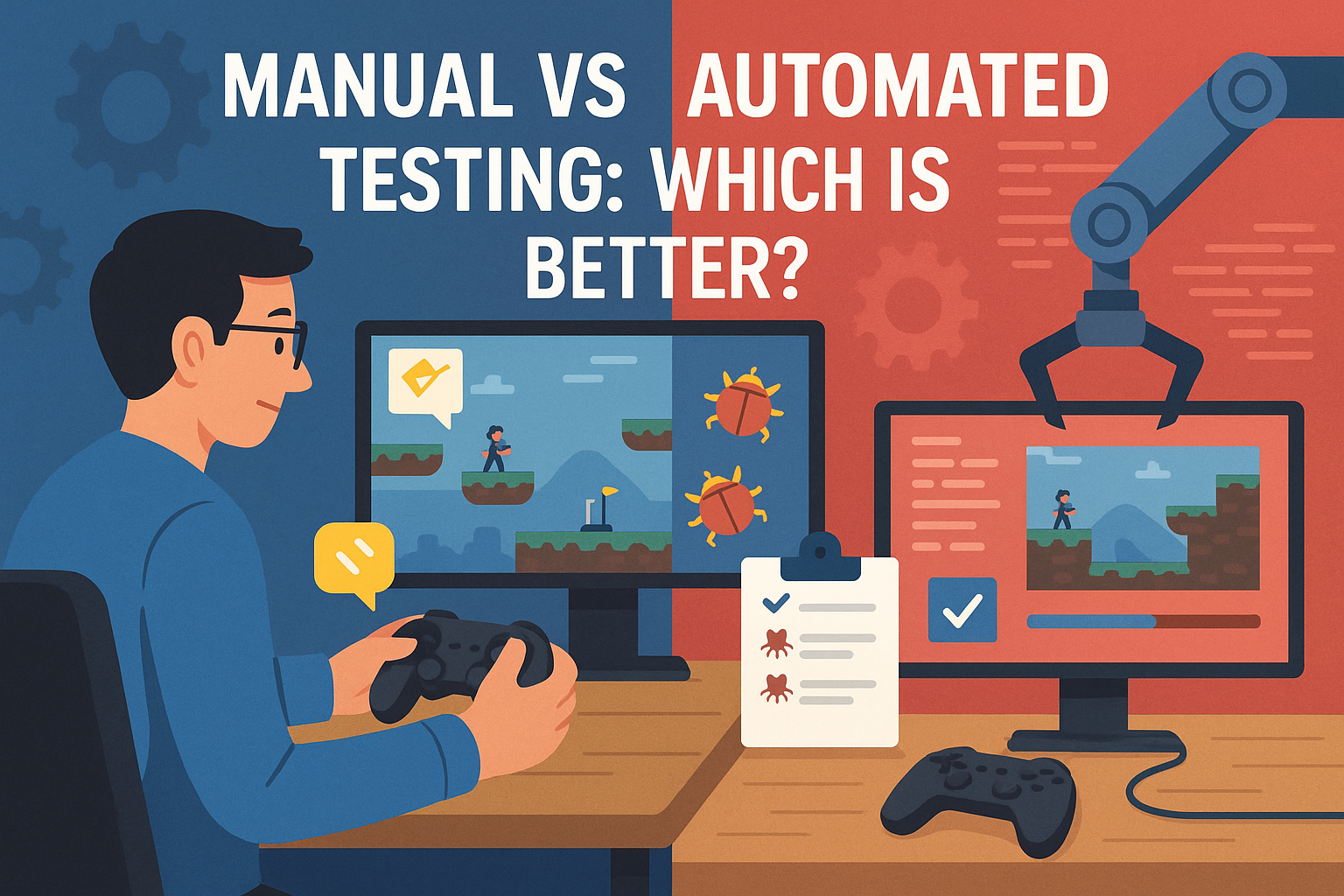In the world of software and application development, testing is the backbone of quality assurance. Whether it’s a mobile app, a website, or a game, rigorous testing ensures that users experience smooth, bug-free functionality. A common debate that continues to shape QA strategies is manual vs automated testing. While both serve the same purpose—identifying bugs and validating features—they approach the process differently and are suitable for different scenarios.
In this guide, we will explore what manual and automated testing are, their pros and cons, and how to decide which one works best for your project.
What Is Manual vs Automated Testing?
Let’s start with the basic definitions of manual vs automated testing:
- Manual Testing: Performed by human testers who execute test cases, analyze results, and report issues manually. It relies heavily on intuition, experience, and observation.
- Automated Testing: Involves using software tools and scripts to perform test cases automatically. It requires initial setup but allows repeated and faster execution.
While manual testing focuses on exploration and user experience, automated testing emphasizes efficiency and repeatability.
Advantages of Manual Testing
Despite the rise of automation, manual testing remains important in several key areas:
1. Better for Exploratory and UI Testing
Human testers are best suited for identifying visual bugs, usability issues, and unexpected behaviors that automated tools might overlook.
2. Adaptability
Manual testers can adjust their actions in real time based on the software’s behavior. This flexibility is essential when working with new or unstable builds.
3. Cost-Effective for Short-Term Projects
For smaller projects or one-time testing needs, manual testing avoids the overhead costs of automation setup and scripting.
Benefits of Automated Testing
When comparing manual vs automated testing, automation clearly wins in terms of speed and scale. Here’s how:
1. Faster Execution
Once written, test scripts can be run automatically across multiple environments in less time than manual testing.
2. Consistency and Accuracy
Automated testing reduces human error and ensures consistent results, especially in repetitive testing like regression or performance checks.
3. Long-Term Cost Savings
While automation requires upfront investment, it becomes more cost-effective over time—especially for large-scale applications that need frequent testing.
Manual vs Automated Testing: Key Differences
Here’s a breakdown of the major differences between manual vs automated testing:
| Aspect | Manual Testing | Automated Testing |
|---|---|---|
| Execution | Human-driven | Tool/script-based |
| Speed | Slower | Much faster |
| Accuracy | May vary | High consistency |
| Ideal for | UI/UX, exploratory, ad-hoc testing | Regression, load, repeated tests |
| Cost | Low upfront, high long-term | High upfront, low long-term |
| Flexibility | High | Limited to scripted cases |
When to Use Manual vs Automated Testing?
Choosing between manual vs automated testing depends on various project-specific factors. Here’s a guideline:
- Use Manual Testing When:
- Testing new features or early builds
- Evaluating user interfaces or usability
- Conducting exploratory or ad-hoc tests
- Use Automated Testing When:
- Performing repetitive regression tests
- Testing across multiple devices or platforms
- Integrating with CI/CD pipelines for frequent releases
In many cases, a hybrid testing strategy—combining both approaches—delivers the best results.
Popular Tools for Automated Testing
Several tools are available to streamline automated testing processes:
- Selenium – For web applications
- Appium – For mobile app testing
- Jest – For JavaScript testing
- TestComplete – For GUI-based automated tests
- JUnit / NUnit – For unit testing in Java and .NET
These tools offer scalability and help maintain consistent testing in agile development cycles.
Final Thoughts on Manual vs Automated Testing
The debate over manual vs automated is not about replacing one with the other. Instead, it’s about understanding the strengths and limitations of each approach and applying them where they fit best. Manual testing offers human insight and adaptability, while automation brings speed, accuracy, and efficiency.
By choosing the right combination based on your project’s scope, timeline, and budget, you can ensure comprehensive test coverage, faster releases, and higher software quality.
Also read: How QA Enhances Player Experience in Online Gaming




